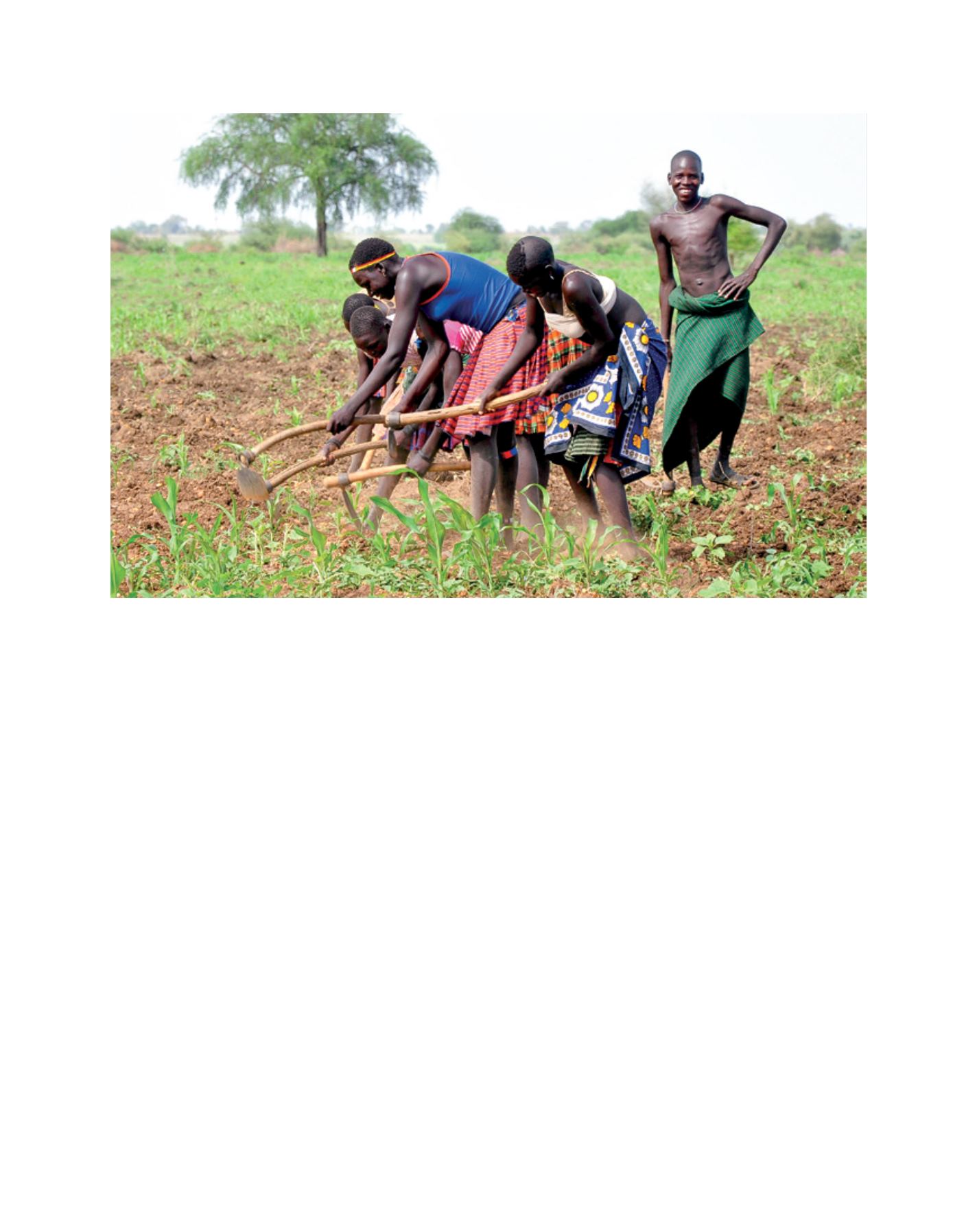

[
] 143
Karamoja people are younger than 18 years with just 115,985
children in the 245 primary schools and 7,158 children in
the 20 secondary schools.
4
Socioeconomic infrastructure and
services such as roads, health centres, clean potable drinking
water, sanitation and schools, and infrastructure such as roads
and markets are poorly developed. Only 46 per cent of people
in Karamoja have access to safe drinking water and 8 per cent
have access to sanitation.
The Karamojong stay in ‘manyattas’ (homesteads) — a
secure environment in which more or less 20 households
live together. These households share a common perimeter,
fenced off with local materials such as wooden poles and
thorns to form a manyatta. The families in a manyatta are
often related and live in close proximity, appreciating the need
for safety and interdependence. They engage in shared labour
like herding, watering livestock and gardening, and provide
social support to each other in times of need.
The climate in Karamoja varies from arid to semi-arid, with
precipitation from 500 mm per annum in the east to 1,200
mm in the west. Precipitation varies widely from year to year
and by region. Karamoja has a unimodal rainfall pattern with
rainfall from the end of March to October, and a prolonged
dry period from November to March. Maximum temperatures
in the east are 35.6°C with a minimum of 5.5°C during the
dry season. Dry periods and droughts are a natural occur-
rence in Karamoja and part of the climate regime. A number
of recent reports blamed recurrent droughts on the effect of
climate change.
5
The Karamoja region consists mainly of three agricultural
systems: pastoralist in the east, agro-pastoralist in the central
part, and predominantly agriculturalist in the north-west,
named the ‘green belt’ of Karamoja. Livelihoods and agricul-
tural systems are mainly linked to climatic conditions.
Land tenure is one of the most important vulnerability
and/or coping capacity indicators for drought risk. The four
main tenure systems in Karamoja are freehold, leasehold,
mailo and customary. Customary tenure consists of indi-
vidualized and communal subtenures, each with distinct
characteristics and resource rights for individuals, house-
holds and the community. The two subtenure types are
distinguished on one hand by grazing lands and shrine areas
within the communal subtenure system; and on the other
by arable cultivated land and land used for homesteads on
which the manyattas are constructed in the individualized
customary subtenure,.
The pastoralists in Karamoja own mainly cattle, goats and
sheep with a few camel owners close to the Kenya border.
Though characterized by a nomadic grazing pattern, their
livelihoods are sedentary with families remaining in the
manyattas while herders migrate to available grazing areas
with drinking water as determined by the season and dry
conditions. The mobility of pastoralists in Karamoja is one of
the main coping mechanisms against drought and the single
largest factor contributing to resiliency against dry periods
and drought. The relatively low population and animal
numbers, combined with available land, currently favour
Image: DiMTEC
Most of the primary cultivation and weeding is done manually, by women
L
iving
L
and
















